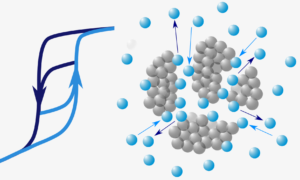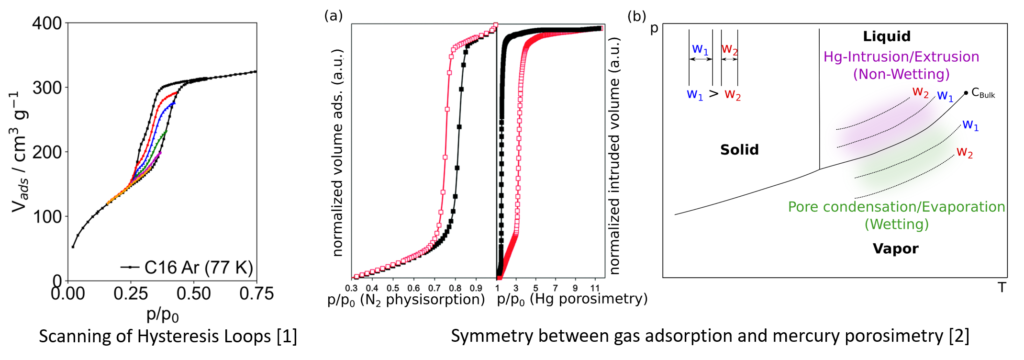Adsorption and Nanoporous Materials Characterization
 Theme overview and objectives
Theme overview and objectives
Our main focus is on the investigation of the phase and wetting behavior of fluids in pores/adsorbent interfaces, and on the surface and pore structural characterization of nanoporous materials. A main goal is to build a link between adsorption properties and characteristics of adsorbents, with processes and applications in important areas, such as gas- and energy storage, separations, and heterogeneous catalysis.
Methods and capabilities
We utilize a variety of techniques for the investigation of adsorption mechanisms as well as the effect of confinement on the phase, adsorption and wetting behavior of fluids. Advanced adsorption and liquid intrusion techniques coupled with data reduction methods based on statistical mechanics (e.g. NLDFT, QSDFT) allow for a detailed textural characterization of nanoporous materials. This is combined with the development of novel methodologies for textural characterization and adsorption measurements such as in-situ adsorption calorimetry, NMR relaxometry and X-ray computed tomography. Structural properties can then be coupled with information on the performance of gas storage and separation processes to investigate the structure-property-performance relationship. We therefore investigate the adsorption behavior of fluids such as H2, CO2 and gas mixtures such as CO2/CH4 in nanoporous materials with static and gravimetric techniques. These experiments are complemented by high pressure adsorption as well as dynamic adsorption/desorption experiments and measurements of breakthrough curves coupled with advanced molecular simulation.
Highlights

Literature
[1] Garcia-Martinez J, Xiao C, Cychosz KA, Li K, Wan W, Zou X, Thommes M. 2014. Evidence of Intracrystalline Mesostructured Porosity in Zeolites by Advanced Gas Sorption, Electron Tomography and Rotation Electron Diffraction. ChemCatChem. 6(11):3110–15
[2] Guillet-Nicolas R, Ahmad R, A. Cychosz K, Kleitz F, Thommes M. 2016. Insights into the pore structure of KIT-6 and SBA-15 ordered mesoporous silica – recent advances by combining physical adsorption with mercury porosimetry. New Journal of Chemistry. 40(5):4351–60